#World Conference on Cultural and Arts Education
Explore tagged Tumblr posts
Text
So proud to be part of this again.
Do come along!
#SASA#classics#education#learning#ancient greek#latin#classical world#relevance#teaching#ancient world#conference#ancient science#ancient culture#ancient art#ancient engineering
0 notes
Note
Do you have a degree from uni or is butchfemme history just a personal interest? I'm just curious if you've got a dissertation/thesis you'd be willing to share, or anything of the like 💚
hey there! so yes and no! you probably don't need this much info but i'm feeling particularly chatty today lmao
I have two bachelors degrees one BA with a dual concentration in Graphic Design and Photography where I did a ton of butch/femme art (that isn't something I'd share here because it'd be impossible to get every subject's permission), a BS dual majored in Sociology & Gender Studies, and an Master's in Higher Education & Student Affairs. during my sociology/gender studies degree i already knew i wanted to go into DEI student affairs work which meant my undergrad capstone and masters thesis had to be focused on student development theory. both were on the experience/consequences of institutional betrayal on LGBTQ+ undergrads and the implications for student development and transition theory. this work isn't super thrilling to read unless you're also a student affairs nerd lol
however! in 2011 i started my work on butch/femme culture/history and began reading everything i could find, writing short papers, doing research for class projects, giving presentations, and most importantly- engaging in real world, intergenerational, butch/femme community with elders who used oral storytelling traditions to impart cultural education. from there, my work predominantly was (and still is) lecture based education done in classrooms and at conferences/gatherings. this is because 1) my academic publications are focused on my 3 other areas of research and they keep me very busy writing and 2) because I truly feel that in person (or virtual real time) education is the best way to share information about our history/culture/identities. some might disagree about this method as it means access is more limited however, i truly believe that building community this way is important and it's what i am best at!
i'm about to launch a larger scale ethnographic project interviewing butches and femmes about their identities (particularly stone folks) AND i'm heavily considering starting a Patreon to take my work outside the walls of academia and make it more accessible, so be on the lookout for both! 💖
9 notes
·
View notes
Text
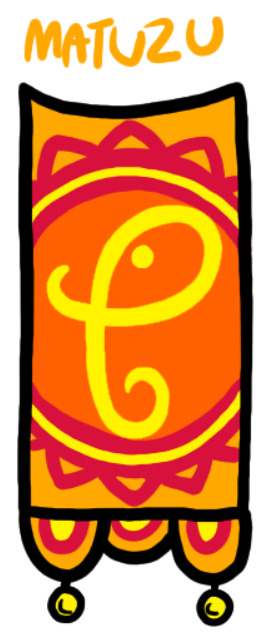
MATUZU KINGDOM
OVERVIEW
Current Leader: High Prince Marghan Matuzu
Color: Orange
Symbol: Elephant
Also known as the “First Kingdom”. Matuzu Kingdom is best known for its great wealth, cultural diversity, and high regard for art and education. It was the first civilization on Gaia to be known as a Great Kingdom.
It is known as an abundant land of opportunity by some, and a war-mongering bully by others. Matuzu has a very long history behind it, enduring many different leaders, catastrophes, and political revolutions throughout the ages. It began as a collection of many small kingdoms, which later formed an alliance under one power.
Matuzu’s territory once encompassed ⅔ of Serkel. In the late 3rd Age, however, it suffered a civil war which caused a significant loss of land to Etios Nation. It is now sandwiched between two enemy powers: Yerim-Mor to the north and Etios to the south. While this kingdom has no current allies, its wealth and abundant geography allows it to have a great deal of independence.
Because of its wealth, stability, and central location, Matuzu Kingdom was chosen as the location of the World Athenaeum. Many world conferences are also held in its territory.
DIPLOMACY
HISTORY
ECONOMY
POLITICS
CULTURE
MILITARY
LAW
DEMOGRAPHICS
TRIVIA:
-Matuzu’s banner depicts an elephant, a symbol of intelligence, creativity, and family in Matuzan culture.
-Its official color, orange, represents the flames of the Scorching Death that nearly destroyed the kingdom, but ended up invigorating it by fertilizing its soil.
SEE ALSO
High Prince Marghan
Matuzan Hairstyles
Matuzan Cuisine
Kaconenans
Religion: Arjukam
Rainbow Trees
City: Koeshan
Ask - Matuzu
*
Questions/Comments?
Lore Masterpost
Read the Series
9 notes
·
View notes
Text
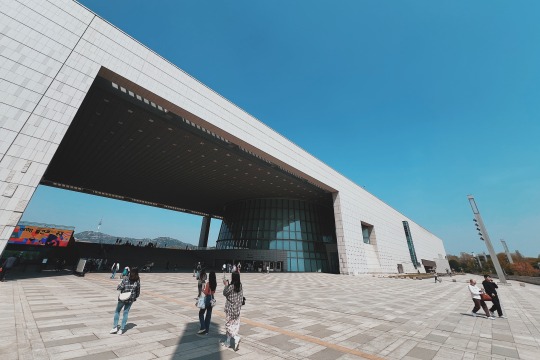
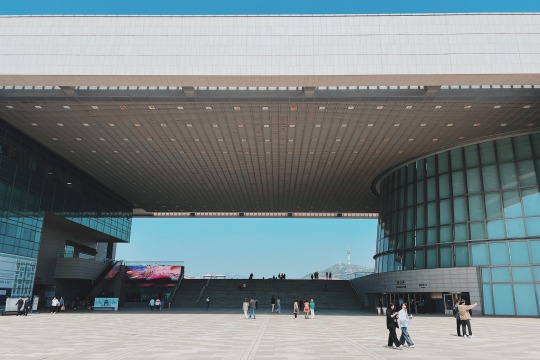
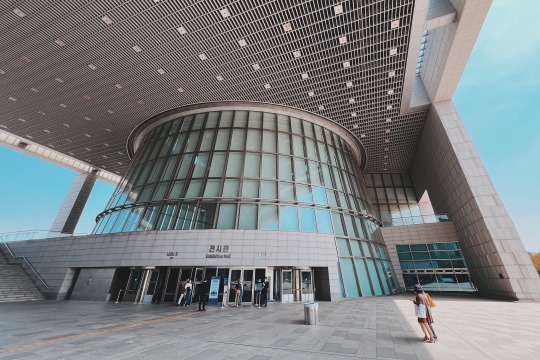
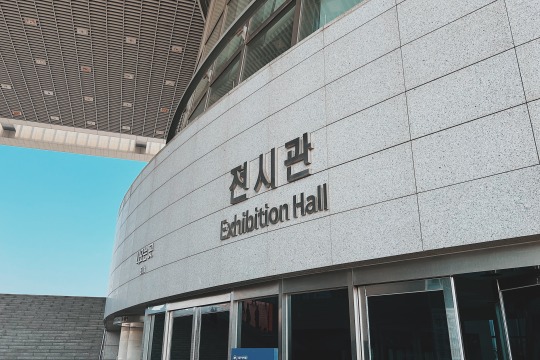
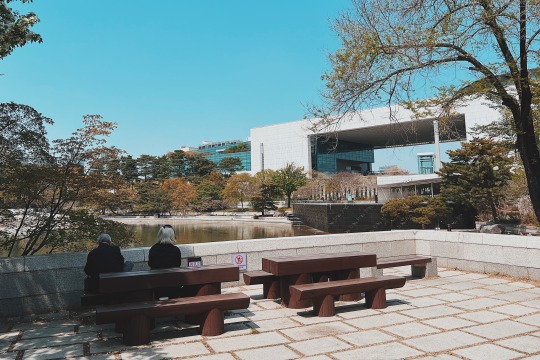
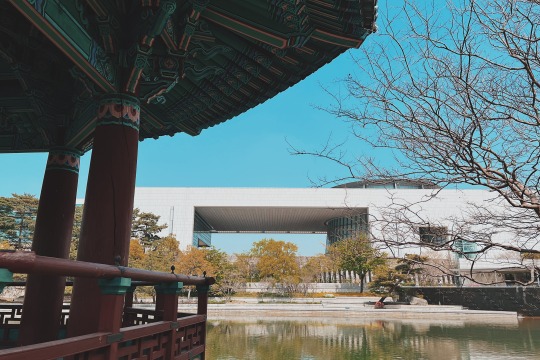
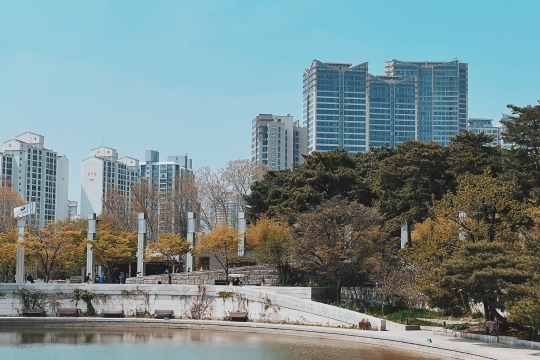
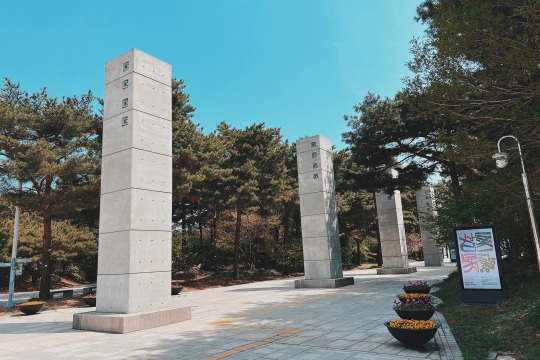
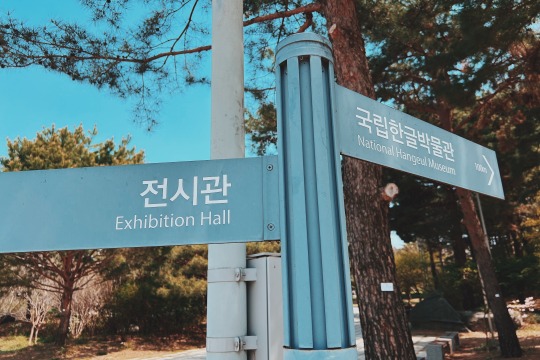
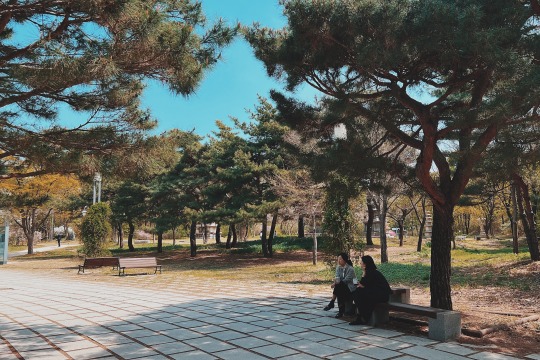
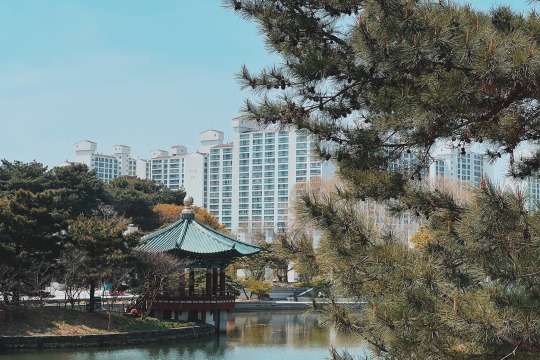
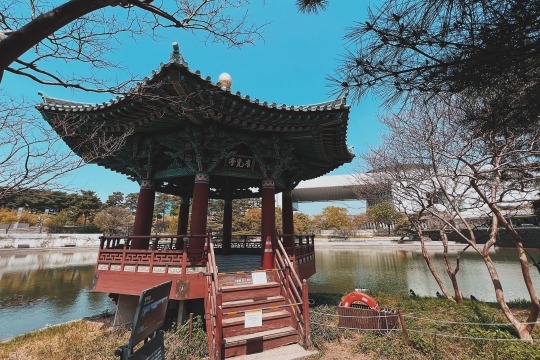
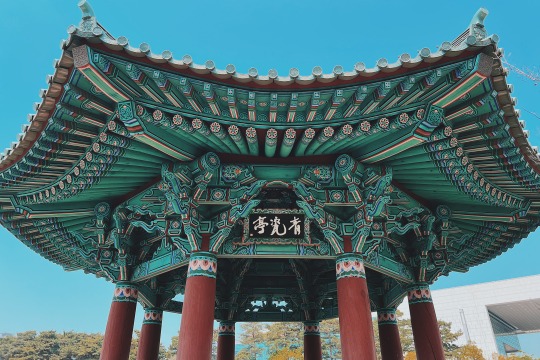
The National Museum of Korea is the most representative and extensive museum in Republic of Korea. The museum holds an immense collection: it has more than 410,000 historically valuable and highly aesthetic relics ranging from the Paleolithic Age to the early 20th century, and more than 12,000 masterpieces of its collection are always on display in its permanent exhibition hall.
The museum also houses a Children's Museum, where visitors can learn more about the nation's history through educational programs and experiences. The outdoor grounds feature pagodas and other stone artworks too large to be on display inside. In addition to galleries with a wide array of national and international pieces, the National Museum of Korea is a stage for a number of cultural activities related to collection, preservation, research and analysis, social training, academic publications, intercultural exchange programs, concerts, and more.
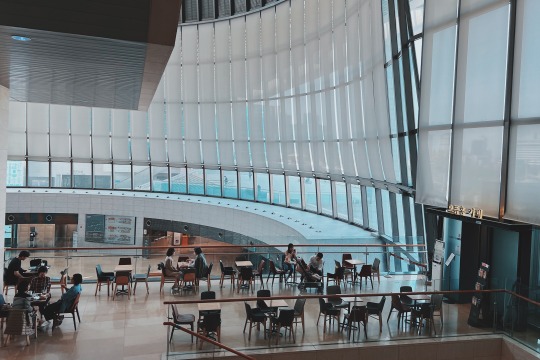
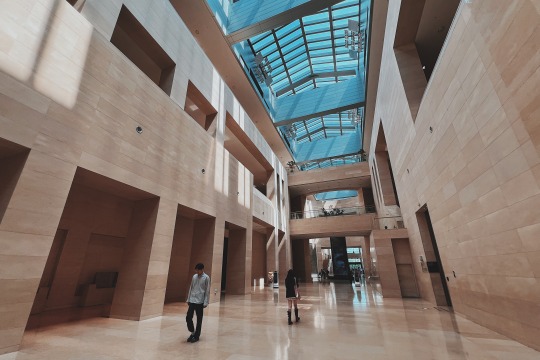
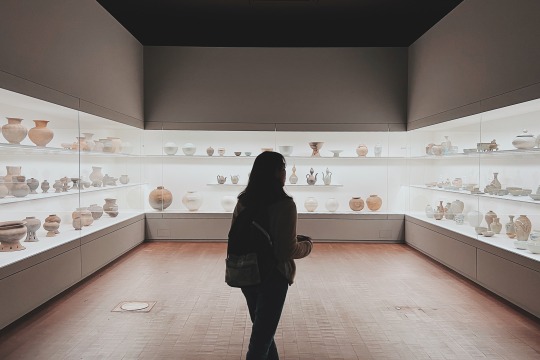
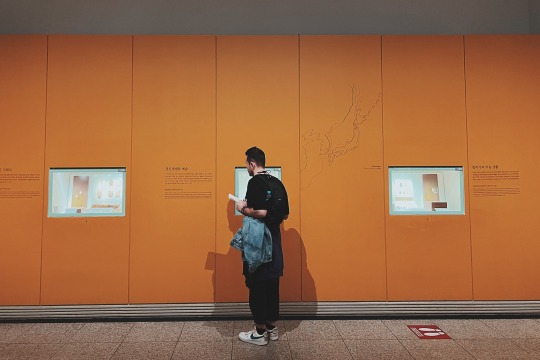
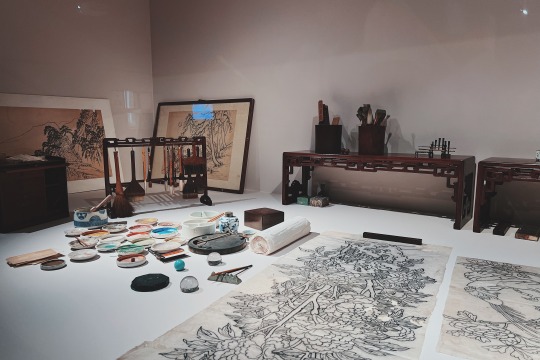
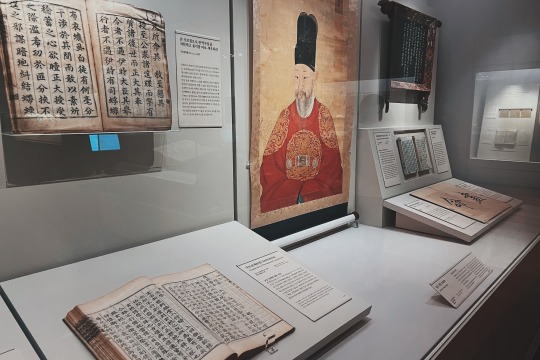
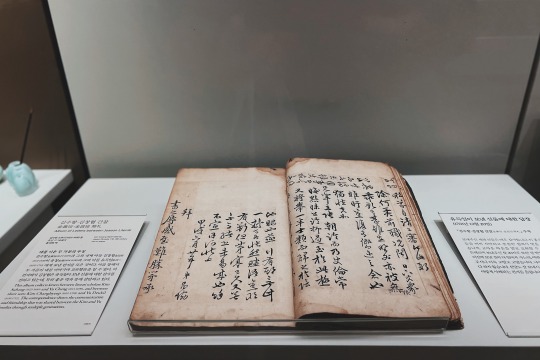
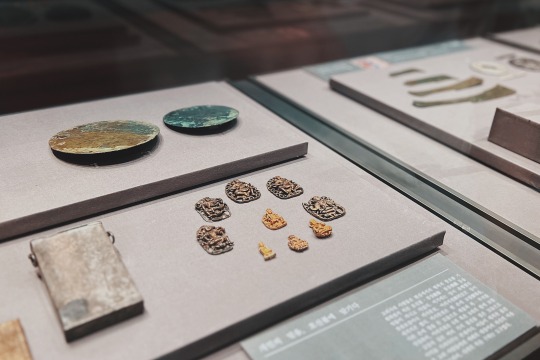
The museum has six galleries: Prehistory and Ancient History, Medieval and Early Modern History, Donated works, Calligraphy and Painting, World Art, and Sculpture and Crafts Galleries.
The National Museum of Korea was established in 1945. In 2005, the museum extended and reopened on a site of 307,227㎡ (building area: 45,438㎡) in Yongsan, Seoul. Since its rebirth as a “cultural complex,” the National Museum of Korea not only to preserves and exhibits precious relics, but also provide various educational programs and cultural events.
The National Museum of Korea has a number of important cultural materials related to Silk Road (both land and maritime) from Central Asia, East Asia, and Korea. In particular, its unique collection of Sinan Undersea Relics which is a valuable source of information for study of ancient trade between China, Korea and Japan. A sunken Chinese trading ship was discovered in 1975, in the Korean southwest coast near Sinan, Jeollanam-do Province. The ship, carrying trade goods produced on orders from the Kyoto area, sank on its way to Japan from Ningbo in Zhejiang Province, China in 1323. About 30,000 maritime Silk Roads objects were excavated; they are 14th century Chinese goods, including celadon wears, coins, metal artifacts, medical artifacts, and many other types of objects.

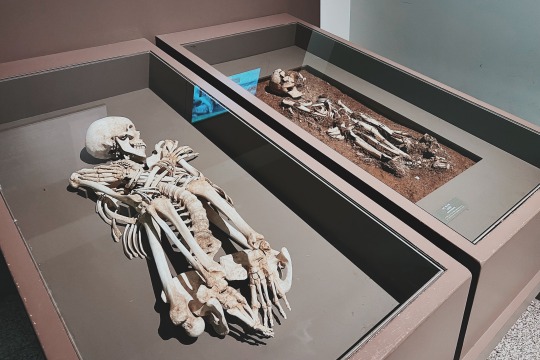
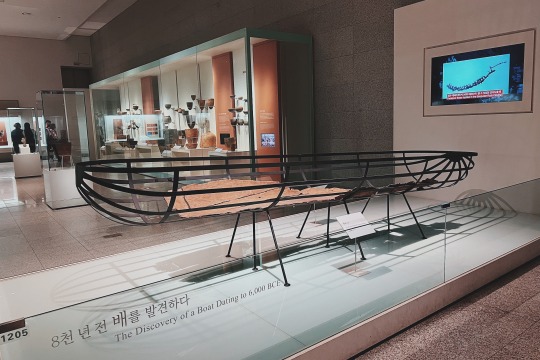
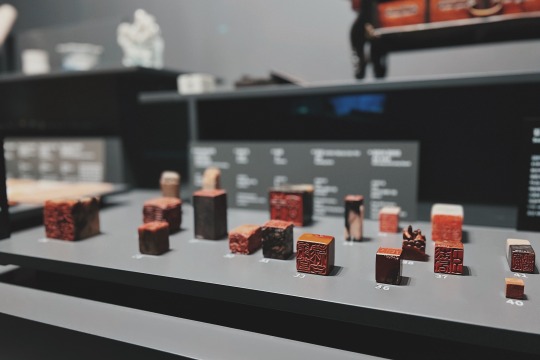
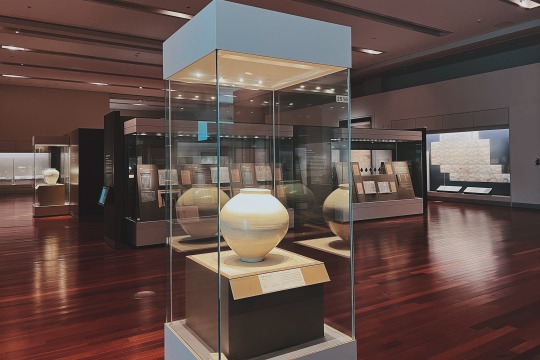
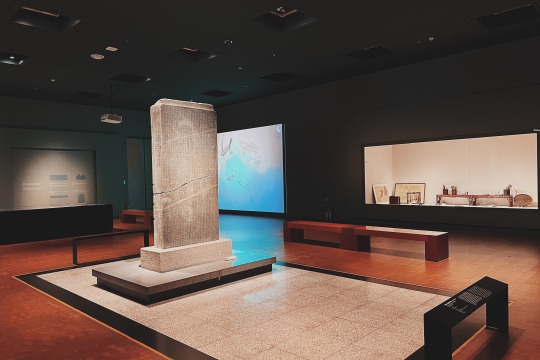
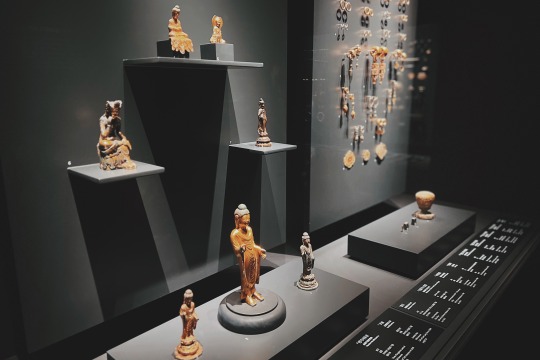
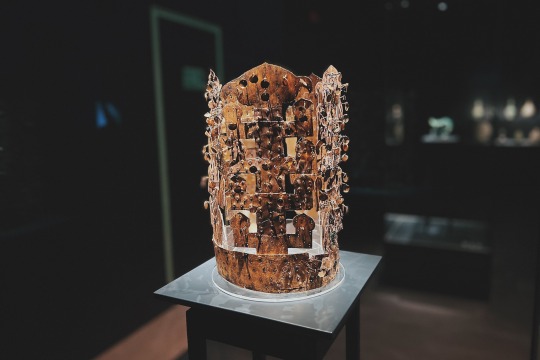
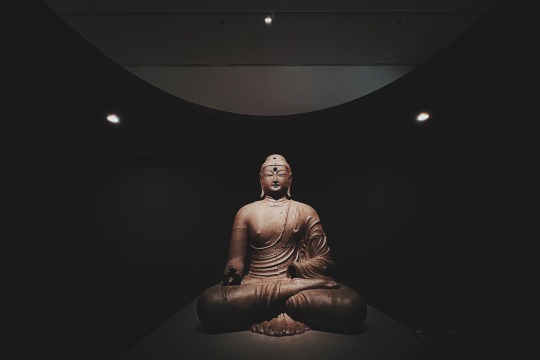
Visitors can appreciate its vast collection; numerous national treasures of Korea are exhibited including Pensive Bodhisattva (a Korean National Treasure), Goryeo Celadon Openwork Burner, Ten-Story Pagoda from Gyeongcheonsa Temple Site, and Gold Crown from Silla.
In addition to the programs and contents respects mentioned above, the National Museum of Korea would be one of the best museums in the world, in terms of the size of the museum (biggest one in Asia and sixth in the world), the annual attendance figures (1st in Asia, 10th in the world in 2009), additional facilities (a theater, a cafeteria, a museum shop, education hall, conference rooms), and digital services for the exhibition (PDA, MP3 and kiosk system).
Opening hours: Monday, Tuesday, Thursday, Friday & Sunday : 10:00 am ~ 6:00 pm (Final entrance at 5:30 pm); Wednesday & Saturday : 10:00 am ~ 9:00 pm (Final entrance at 8:30 pm)
23 notes
·
View notes
Text
First Nigerian Republic - Wikipedia
UNRULY SHOTTAS: PORT SYDNEY
Based on the True Story of a Culture Capital. They were the Murder Capital of Latin America, Made a Aussie Accent, Set World Records for Athletics, Printed over £50 Billion in Barbados, and immigrated a Nigerian Rugby Prospect. They made the Kingston-Calabar OT Trafficking Intermodal through Investments for a Trade Agreement and a Highway. Port Sydney Changed from a Fishing Villages to a Port Town.
Port Sydney (Ocho Rios) is a port town on the north coast of Jamaica. A former fishing village, it’s now a resort with a cruise ship harbor and a busy bay beach that’s lined with hotels. The surrounding parish of Saint Ann is home to rainforest, rivers and waterfalls. Dunn’s River Falls is a terraced, 180m mountain waterfall with lagoon pools, surrounded by trees.
Gold Smuggling through a Government Yard and Western Projects Point of View called Slumdog Millionaire: My Richness Is Life.
Philosophy
True Identity
Logotherapy
Having a Leopard’s Heart
Reproduction
Astrology
London Trap Culture
Ethnic Separatism (YARDIE)
African Diaspora
Sub-plots
Decadence
Ogun
Pre-colonial Africa
Trans-atlantic Slave Trade
Warlord-ism
African Drums and Shamanic Drumming
West African Pound
Tech-Driven Solutions Agronomics
Conflict Prevention and Reconstruction Unit
SUN LORD STRUCTURE
A cathedral is a church that contains the cathedra of a bishop, thus serving as the central church of a diocese, conference, or episcopate.
Parish Artisanal Plantation
Art Collegiate
Recession Resistance Industry
Marines Exclusive Church for Retirement Home
Rugby Church League on Thursday and Sunday after 5:30 and Noon Virgil; Equipment Sponsor and Free Clinics; Ram Sacrifices for Mars Venerated Athletes
My version of the Heavenly Host. Proxy Murder Government Officials, Judges, and Police Stations with Arcarbine Lords for Urban Warfare.
Westminster System with Executive Branch for Choirs and House of Lords ARCABINE LORDS
Another phrase to describe this obedience to the voice is “reckless abandon.” It simply means that we let God do what God wants to do through us. It means if He tells us to do something or say something—we do it.
Pedagogy (/ˈpɛdəɡɒdʒi, -ɡoʊdʒi, -ɡɒɡi/), most commonly understood as the approach to teaching, is the theory and practice of learning, and how this process influences, and is influenced by, the social, political, and psychological development of learners. Pedagogy, taken as an academic discipline, is the study of how knowledge and skills are imparted in an educational context, and it considers the interactions that take place during learning. Both the theory and practice of pedagogy vary greatly as they reflect different social, political, and cultural contexts.
Augustine's thesis depicts the history of the world as universal warfare between God and the Devil. This metaphysical war is not limited by time but only by geography on Earth. In this war, God moves (by divine intervention, Providence) those governments, political/ideological movements and military forces aligned (or aligned the most) with the Catholic Church (the City of God) in order to oppose by all means—including military—those governments, political/ideological movements and military forces aligned (or aligned the most) with the Devil (the City of the World).
Mekubbalim (followers of Kabbala) claim that the symbol has magical powers. There is no explicit historical or archaeological support for any of those claims. The star consists of two intertwined triangles: one pointing up to God and the other pointing down to man, symbolizing the relationship between the two—"the interpenetration of two realms" (source: Franz Rosenzweig, Star of Redemption, 1912). The animals associated with the Christian tetramorph originate in the Babylonian symbols of the four fixed signs of the zodiac: the ox representing Taurus; the lion representing Leo; the eagle representing Scorpio; the man or angel representing Aquarius. SHIELD OF OBASI!
God of Bethlehem: Regulus; Uranus-Saturn; Pluto Sol, and Venus (Sun Sky God; Elements Sun, Thunder, Air; Cardinal) Crista: Armour of God, Shield of Trinity, Shield of Obasi, Mars Blood, Rose of Venus, Pluto Effect, and Virility Crown; Religion: Tewahedo, Physique: Anabolic Metabolism Insulin Sensitivity, MSTN GENE, Roux en Y FBN1
RUGBY
World Cup Ambassador: In the Commonwealth of Nations, a high commissioner is the senior diplomat, generally ranking as an ambassador, in charge of the diplomatic mission of one Commonwealth government to another. Instead of an embassy, the diplomatic mission is generally called a high commission.
Work Out: Hurdle Plyometrics, Open Closed Chain Resistance Training with Power Sleds, Wall Sit Jump Contrast Training, and Lane Swimming with Treading Breaks for Body Recomposition and Metabolic Resistance Training
Offence: Fly-half And Centre Brigade: Kick Steps, Grubber and Drop Kicks, Crash Balls Mauls (Forearm Shoulder Barge), Clear outs, and Offload Playmaker. First Receiver after Rucks. Three Door Explode: Three Doors as Decision Making Indicator for Down Hill Sprinting; if No Doors Pass the Ball.
Defence: The basic defensive unit in rugby consists of three players. This obviously shifts very quickly, but at the point a tackle is likely, there should be a defender square with the ball carrier and supporting players on either side square with the immediate threats on the ball carrier's left and right. The drift defence is one of the two main types of defensive strategies in rugby (the other being the blitz defence). The basic concept behind the drift defence is to go “up and out” as a defensive line; once the ball carrier has past, the defender marking them should push outward to cover the receiver whilst the rest of the defensive line also shifts outward. Umbrella Defence provides more intensity in front of the ball than flat defence, with flanking support a step behind to cover kicks and recover quickly after a tackle is made. It also makes it easier to stop linebreaks if the player in front of the ball carrier is stepped.
Jack Boys: Players who have the ability to play a number of positions in a team are called utility players.[95] Utility players can be seen as "Jack of all trades"[95] and they generally occupy the reserve position in a team.[96] For this reason, many try to avoid being labelled as utilities.[97][98] Players in the forward positions are generally more specialised than those that play in the backs. However, flankers can usually play number eight, like Grégory Alldritt, David Pocock, Caelan Doris and Kieran Read. Many players may also be capable of playing lock as well as a back-row position, with several modern examples being Sébastien Chabal, Maro Itoje, Tadhg Beirne, Ryan Baird, Courtney Lawes, Steven Luatua, and Cameron Woki, all with international caps in both rows of the scrum. The front row positions are usually very specialised, although some props can play both sides or even hooker.
Quasi BioAesthetics as Topic and Things to Write about:
Gold Iron Calcium Zinc Oxide Hyaluronic Acid Illite Clay Hydrolyzed Collagen BioRNA Cluster
Bone Metabolism are Light but Metal like Aluminum
Pheomelanin Mid Brown Diamond Face
Blonde Hair with Hazel Eyes with Gold Fleeks
Ambidextrous Hand Eye Foot Coordination
Posterior Gross Motor Skills
Crystalized and Fluid Intelligence
Savant Sensory Overload
Sensory Modulits CNS
Omega 3 6 9, Conscientiousness, and Executive Functioning Skills no Amygdala Grey Brain
Stretch Vocal Chords with Tenor Voice
GABA Acetylcholine Receptors Sensitivity
Gnomes (Earth) And Salamanders (Fire)
God of Bethlehem: Regulus; Jupiter; and Venus (Sun Sky God; Elements Sun, Thunder, Air; Cardinal) Crista: Armour of God, Shield of Trinity, Mars Blood, Rose of Venus, Pluto Effect, Tarthatharath, and Virility Crown; Religion: Martyrology Angelican, Physique: Anabolic Metabolism Insulin Sensitivity, MSTN GENE, Roux en Y FBN1
DRUG SORCERY AND PHARMACOECONOMICS (PHARM BOYS AND PHARMA FIRMS)
Pharmaterrorism, in its original context, is understood to refer to the attempts of narcotics traffickers to influence the policies of a government or a society through violence and intimidation, and to hinder the enforcement of anti-drug laws by the systematic threat or use of such violence.
Pharma Maritime economy is a political and economic term applied to countries where all legitimate institutions become penetrated by the power and wealth of the illegal drug trade.
Elements of the maritime industry such as seaports and terminals have always been important areas of social and economic opportunities. Ports are key strategic sectors, playing key economic, internal and international security roles for both developed and developing countries.[9] The strategic importance of ports and other maritime resources have led to the industry being criticized by Maersk, a major shipping company, as "an environment where facilitation payments and extortion are common occurrences".[10] In the EU specifically, coastal regions and major sea ports have shown to present the highest risks of corruption. Europe's coastal borders have increasingly been subject to corruption pressure by smugglers in the past few years. In addition, border guards and local government officials are often involved in corruption schemes related to cross-border trade.Typically, in European small coastal towns, the corruption of border guards is often related to corruption in local authorities.[11] Several ports in Europe have been identified by the Center for the Study of Democracy as having extreme vulnerability to corruption pressures:[11]
Corruption can be defined in various ways. For example, according to the Oxford Dictionary, corruption is “dishonest or illegal behavior, especially of people in authority”.[4] Huntington (1989) defined it somewhat differently, by describing corruption as “the behavior, exhibited by public officials which deviates from accepted norms in order to serve private aims”.[5] These definitions are also correct for maritime corruption specifically, however, in this field corruption can be categorized in different ways – especially at ports.
Sequeira and Djankov (2014) distinguish between two types of corruption at ports: collusive and coercive corruption. Under collusive corruption, public officials and private agents share illicit transaction-generated rents, while under coercive corruption, public bureaucrats force private agents to pay additional fees to be able to gain access to public services and goods.[6]
Pharmacoeconomics refers to the scientific discipline that compares the value of one pharmaceutical drug or drug therapy to another.[1][2] It is a sub-discipline of health economics. A pharmacoeconomic study evaluates the cost (expressed in monetary terms) and effects (expressed in terms of monetary value, efficacy or enhanced quality of life) of a pharmaceutical product. Pharmacoeconomic studies serve to guide optimal healthcare resource allocation, in a standardized and scientifically grounded manner.
Pharmacoeconomics centers on the economic evaluation of pharmaceuticals, and can use cost-minimization analysis, cost-benefit analysis, cost-effectiveness analysis or cost-utility analysis. Quality-adjusted life years have become the dominant outcome of interest in pharmacoeconomic evaluations, and many studies employ a cost-per-QALY analysis. Economic evaluations are carried out alongside randomized controlled trials and using methods of decision-analytic modeling. Pharmacoeconomics is a useful method of economic evaluation of various treatment options. As more expensive drugs are being developed and licensed it has become imperative especially in context of developing countries where resources are scarce to apply the principles of pharmacoeconomics for various drugs and treatment options so that maximum improvement in quality of life can be achieved in minimum cost.[3]
A tablet press is a mechanical device that compresses powder into tablets of uniform size and weight. A tablet press can be used to manufacture tablets of a wide variety of materials, including pharmaceuticals, nutraceuticals, cleaning products, industrial pellets and cosmetics.
A cough syrup filling machine is designed to fill liquid in any viscosity, including syrup. There are many types of syrup-filling machines, such as vacuum, servo, pump, gravity, pressure, piston, and counting filling machines.
NIGERIAN POUND
The pound was the currency of Nigeria between 1907 and 1973. Until 1958, Nigeria used the British West African pound, after which it issued its own currency. The pound was subdivided into 20 shillings, each of 12 pence. The Nigerian pound, at parity with sterling with free convertibility,[1] was replaced in 1973 with the decimal naira at a rate of £1 = ₦2,[2] making Nigeria the last country to abandon the pre-decimal £sd currency system.
The House of Representatives (also called Green Chamber) is the lower chamber of Nigeria's bicameral National Assembly.[1] The Senate is the upper chamber.[2]
The First Republic was the republican government of Nigeria between 1963 and 1966 governed by the first republican constitution. The country's government was based on a federal form of the Westminster system.
An index fund (also index tracker) is a mutual fund or exchange-traded fund (ETF) designed to follow certain preset rules so that it can replicate the performance of ("track") a specified basket of underlying investments.
Key performance indicators (KPIs) are quantifiable measurements used to gauge a company’s overall long-term performance. Organizations use KPIs to track their progress on key business objectives.
ARCABINE LORDS
4 notes
·
View notes
Text

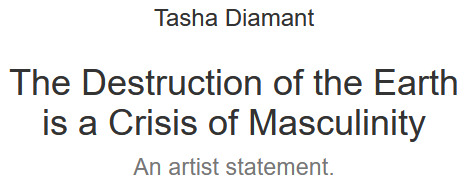
In my performance art in theatre spaces since 2006, I use my naked body and unscripted self to share and create space for vulnerability. In the years between 2012–2019 I did regular Vulnerability Vigils, where I made a practice of standing naked on the street once a month for at least an hour. (On the street, I held a sign in front of my body — often an Extinction Symbol — in a gesture of gentleness to those who are affronted by nudity.)
I do not feel comfortable presenting myself naked. It’s not about comfort. It’s about confronting comfort.
Through this confrontation, I have come to more deeply and viscerally understand that the destruction of the earth—and the corresponding violence to women, children, queer people, Indigenous and racialized people, poor people, disabled people, and other marginalized people—often viewed as a crisis of modernity and industrialism, must also be viewed as a crisis of masculinity.
Almost all of the world’s violence is directly caused by men and masculine/patriarchal systems. We are all affected and all tainted by our participation in these systems. The world is run by men and every structure in the dominant culture (laws, institutions, language, technology, etc) is built on the domination principle of patriarchy/masculinity.
So this past hellish summer? Direct result of patriarchy.
People are still “debating” whether climate change is real and governments stall and lie. Why? Because the climate crisis narrative cannot be parsed. In our patriarchal structures there is no built-in “enough is enough.” Not in the language, not in the systems. As Slavoj Žižek has said: “It is easier to imagine the end of the world than an end to capitalism.”
A simple definition of culture is the water we swim in. We swim in a water where EVERYTHING is about exalting masculinity, which is domination, which is lack of consent, which is dehumanizing and TRAUMATIZING.
Examining the mechanics of masculinity can help us understand how we got here and why it’s so difficult to move out of it.
In The History of Men, masculinity scholar Michael S. Kimmel observes that:
“…masculinities are constructed in a field of power: 1) the power of men over women; 2) the power of some men over other men. Men’s power over women is relatively straightforward… Men’s power over other men concerns the distribution of rewards [in society] among men by differential access to class, race, ethnic privileges or privilege based on sexual orientation… The constituent elements of ‘hegemonic’ masculinity, the stuff of the construction, are racism, sexism and homophobia.”
Jackson Katz is another masculinity scholar and anti-sexist educator/activist. In his documentary, Tough Guise, we see many young men answer a simple question: what does it mean to be masculine? The answers are obvious. Dominant. Don’t show emotion. Don’t be a pussy. Strong. Mean. Powerful.
Then he goes on to share statistics showing that men commit ~95% of every violent crime.
Kimmel relates an experiment from many years ago:
“…groups of college students were asked to write down the 10 most important words that describe their identities… Invariably, women all listed ‘woman’ in the top three, gay people listed their sexuality, and African Americans almost always placed ‘black’ as their number one… not one man listed ‘male’”
Kimmel himself describes the moment it dawned on him that he was white, middle-class, and male. Until he had taken a feminist seminar in the 70s it had never occurred to him to identify himself in this way because those aspects of who he is had never been an issue. “The very processes that confer privilege to one group and not to another group are often invisible to those upon whom that privilege is conferred,” states Kimmel, “I enjoy the privilege of invisibility.”
Men, Kimmel observes, are “ubiquitous in positions of power everywhere” and thus, paradoxically, “invisible to themselves.”
When I read this, I was reminded of Gertude Stein’s prescient observation of emerging suburbia in the early 20th century, “there is no there there;” and novelist Richard Ford’s portraits of lost, numbed-out, middle-aged white guys. This concept of invisible masculinity also parallels my understanding of the black hole of the missing land-spirit connection so entrenched (and invisible) in patriarchal culture.
I have learned that my own privilege and its corresponding invisibility exacerbated/s my emotional pain and disconnection, while keeping me in ignorance of the ways I am complicit in creating pain for others.
Katz makes a compelling point about masculinity as performance. He shows how white, middle-class, suburban boys imitate black rappers who themselves imitate Italian gangsters in the movies. One of Kimmel’s points is that masculinity is about constantly having to prove oneself.
The Mask You Live In, is a documentary about American masculinity. My upbringing and understanding of how to be in the world, as a privileged white girl and woman coming of age in the 1980s, was in many ways very similar to how that documentary sketches what boys are offered. I was brought up to suppress emotion and sensitivity. I was supposed to never show weakness and be “successful,” which, in my milieu, was very much equivalent to what Kimmel describes as the “very specific construction” of the “generic man,” which is, like Ford’s characters, “a white middle-class entrepreneur.”
Kimmel points out that a “version of white, middle-class, heterosexual masculinity emerged as normative” and, from there, the normative became the normal. In other words, the experience of having to perform masculinity and always prove oneself is a function of culture; about maintaining privilege; and not limited to men.
A key point I take from Kimmel and Katz, is that masculinity is a performance performed to be safe, but the very need to perform creates lack of safety in an exhausting, self-perpetuating cycle.
In many ways, my performance art is about removing the mask of pretend okayness that I live in and doing the opposite of proving myself, i.e., the opposite of tough. I.e., vulnerable. (Not that I’m good at it. It works as an art piece, I’d say, partly because I’m shit at it.)
Indeed, a useful way to begin to understand the concept of vulnerability, I’ve learned, is to purposefully place yourself in a publicly vulnerable position in a culture where this way of being is so shameful it’s practically unthinkable.
Of course, LOTS OF PEOPLE understand lived, embodied, public vulnerability because through their bodies and/or circumstances they are marginalized by race, sexual orientation, gender nonconformity, poverty, disability, and/or etc.
Unfortunately, they must constantly fight for their voices to be heard because they are functionally taboo. So those whose lives and bodies and beings don’t represent masculinity or masculinity’s regimented standards of how to be or look are devalued. Beyond exhausting. (But also a lot of these people have community care, which is something the rest of the atomized, dominant culture does not.)
We observe at the Ada’itsx/Fairy Creek Blockade, that the most vulnerable people are the ones constantly putting themselves on the line. As Kelly Tatham writes in her recent rabble.ca article:
“As a white, cis, able-bodied person I am safe in society (or as safe as you can be as a woman living under patriarchal, colonial rule). When I leave Fairy Creek, I leave the front line. But Indigenous, Black, trans, and other peoples who are preyed upon by the white supremacist system do not share this privilege. Perhaps that is why they are the ones constantly holding down the front line, despite the repeated violence against their bodies. There is no safe society for them to return to.”
I use my privilege AND I have to fight for my voice to be heard. All these years, I have felt that my work is mostly directed to my white and privileged peers. Needless to say, they have not flocked to my shows. Lol. I’ve been an embarrassment to my family and my work literally exists on the fringe in fringe theatre festivals, which are lottery-based, which means there are no art-world/theatre/academic gatekeepers.
I don’t equate my struggle to that endured by non-white, less privileged people. But I am a disabled person living with a diagnosis of Stage 4 cancer, an illness I know I have because of my sensitivity to the damage and trauma caused by this culture. I make no money from my work as an artist and, indeed, can no longer hold a job. I am supported by my earning husband, who himself is tethered to that income source, whether he likes it or not, to support our family. (We’re the lucky ones.)
Doing this work, I have no status, except that of an artist on the margins. Letting go of or having no status in modern culture—patriarchy is all about status — is freeing in a way but it is also unsafe. Since starting this work, I’ve found it so weird that I have had to create a “show” and performance art practice to be authentic. That’s how unsafe I feel, personally, when I try to show up authentically in my “real life.” That’s a void accorded to me by “my culture.”
In the meantime, domination of the natural environment, domination of “labour” across the globe (I mean, billionaires, WTAF?!), domination of women and anyone not quite masculine or high-status enough continues:
The US Supreme Court just overturned Roe vs. Wade (a 50-year-old legal “victory” that should have been a cemented stepping stone for women’s rights but conservative groups have chipped away at it, and any number of equitable laws for women and queer people, for these last decades)
Domestic abuse is the number one cause of injury among American females
1 in 3 women will be raped during their lifetime
Every woman is a #metoo
Trans-women of colour suffer the highest concentration of violence
Men may kill their female partners at more than 20X the rate that women do but, still, men kill more men than women (US stats from Katz)
Indeed ~75% of the victims of homicide (~95% of which are committed by men) are men but men don’t seem to notice or feel the need for liberation from this masculinity-caused carnage
More people die every year from poverty and the effects of climate change than died in the Holocaust
Industrial destruction of the natural world, that mostly benefits the already super-rich, continues at an exponential rate
Rapidly escalating climate crisis
How long until this sinks in???!!! No one is safe.
“That men remain unaware of the centrality of gender in their lives perpetuates the inequalities based on gender in our society” (Kimmel). Just as Kimmel observes that men are invisible to themselves, so is anyone who has never had much reason to question their entitlement.
Here are a couple of perfectly ordinary examples from our invisible culture of entitlement. I was 14 when my family went to Greece in 1976. It was my Greek father’s first trip back since he had immigrated as a teenager. I was used to having hot baths and showers. So my Greek aunt, the one who lived with my old grandparents in a peasant home that still had a cellar built to hold animals; the one who made the cheese, slaughtered the goats, grew the vegetables and cooked; also gathered and chopped wood, started a fire and warmed up water for me. I watched her and thought nothing of it… for decades. I simply expected to have a shower.
I have also used the example of an Elizabeth Renzetti column in the Globe and Mail about Bashar al-Assad’s British-born wife and her appalling behaviour as her husband waged war on his Syrian citizens: she went online shopping. I recall ads on the exact same page for several hundred dollar shoes and pricey crystal. The whole Western world (and our satellite consumerlands) is allowed to shop at the expense of the rest of humanity. Why do we get a socially sanctioned pass?
In my opinion, the biggest problem humans are facing is a world of there is no there there.
No connection=no accountability=no responsibility.
The there IS there, though.
We’re just very well trained, through millennia of patriarchy not to look for it or look at it. It’s why rape is still so invisible. Ohmygawd, besides the brutal and dismissive legal systems, how many women do you know that took forever to realize what happened to them was sexual assault? Lack of consent is embedded in our DNA.
Coupled with our disconnection from land and spirit, also a result of patriarchy, we don’t even understand or have words for or have a relationship with “there.”
But the struggle at Ada’itsx/Fairy Creek is VERY THERE.
These are the very very very last ancient forests. They exist. They are in danger.
These are the bodies of mostly young people putting themselves in the way of the last ancient trees being slaughtered. These are the Indigenous people, survivors of genocide, mostly young women and gender-nonconforming people, doing the MOST WORK, SUSTAINING THE MOST HARM. They exist. They are in danger.
And the forces against them can no longer remain so abstract. I can name some of them. Right off the top of my head.
They are:
Teal Jones, the company that stands to make hundreds of millions to mostly benefit the Jones family who are ALREADY RICH
Other deforestation companies, especially Timberwest (owned by the pension fund for the RCMP) and Western Forest Products whose employees and contractors have taken part in violence against forest protectors
The RCMP who have committed atrocity after atrocity since their inception — and committed hundreds of illegal acts of violence and illegal arrests at Ada’itsx/Fairy Creek — and should be dismantled
The BC and Canadian governments, whose patriarchal, colonial laws should be illegal and, which are, of course, illegitimate governments on stolen land.
The destruction of the earth is a crisis of modernity is a crisis of masculinity is a crisis of entitlement.
Is a crisis of pretty much EVERY SINGLE STRUCTURE AND SYSTEM that exists.
How are you? Fine?
Me? I never feel safe. But I keep trying to show up.
#ada’itsx#climate crisis#colonialism#ecofeminism#fairy creek#fairy creek blockade#feminism#Indigenous solidarity#not-anarchist#oppression#patriarchy#queer#autonomous zones#autonomy#anarchism#revolution#ecology#climate change#resistance#community building#practical anarchy#practical anarchism#anarchist society#practical#daily posts#communism#anti capitalist#anti capitalism#late stage capitalism#organization
4 notes
·
View notes
Text
ALSO I'm once again going to be a panelist, presenter, and moderator at the LTUE Symposium in February!
LTUE is one of the most affordable writers'/creatives' conferences out there (extra discounts for if you're a student) while still giving you a massive bang for your buck. They have eight different 'tracks' for presentations and panels (writing, world building, art, TMA, academics, books, gaming, and professional development), but you can attend literally whichever sessions, panels, or presentations you want, so you can mix and match interests and professional goals.
It's super educational and I highly recommend it to anyone trying to go pro with their creative works, but it's also fun. Like obscene amounts of fun. It's all the best of a convention while also providing genuine professional opportunities. People come in cosplay, Sunday Best, and/or street clothes; I was on a panel last year next to an author with electric purple hair and a real silver fairy tiara whilst I was wearing a t-shirt with a sunglasses possum on it, and the guy on the other side of us was in a full suit and bowtie. There was a life-size Springtrap cosplay out in the main lobby. I pitched for the first time ever to 3 actual literary agents and got 3 requests. I got personal career advice from a 25+ year industry pro. A 12 year old with a "future author" pin asked me questions on my presentation and took notes, and so did an octogenarian in rainbow suspenders. I was taught how to write a professional query letter-- that has a 16% positive response rate, where standard is ~10%-- by a former lawyer in a pirate hat.
It's good vibes only, man.
But you'll also find professional agents, editors, artists, authors, directors, game devs and so on. It's a huge geek-fest that puts people at all levels of the professional world on equal footing. They've even got gaming events and filking circles.
In short, it's networking, fun, hyperfocus material, and professional-level education in equal measure.
I seriously can't say enough good things about it (and not just because I'm involved). There's something for every type of creator/creative out there, 11/10 highly recommend.
Anyway, here's what I'll be up to as a guest during all three days under the read more. (tl;dr conclusion, if you plan to attend and want to meet up, message me!)
Thursday
Original presentation (academics track): Folklore of the American South. An overview of myths, monsters, and old wives' tales from the rich storytelling heritage of the Southern States. AKA I finally have a platform to yell about my cultural heritage and by golly am I gonna yell about it! 10 am (yes it's a bit early, but I swear it'll be worth it! Y'all know you wanna hear about the Rougarou the destiny-determining powers of cornbread!)
Friday
Panelist: Shellshocked: Writing PTSD. Injecting realism into and dispelling myths surrounding characters with PTSD. AKA how flashbacks do and do not work, how to avoid making your character a caricature, and how to be sensitive so you don't use peoples' actual lived experiences as a sensationalist, reductionist cash grab. 10 am.
Panelist: Life After Coming Out. How to feature queer characters in more than just coming-out plots. AKA OwnVoices is not an excuse to exclude the reality of queer people in your built universes; don't write a story that's not yours to tell, but for the love of all things holy there's more stories to tell about queer folks than just The Big Realization! 11 am. (whew mercy, they gonna have me hoofin it all across that hotel RIP my ankles and my asthma)
Panelist: Fat Doesn't Mean Unfit. What it says on the tin. AKA a bunch of chubby folks are gonna demolish your fatphobia and why that's an important and good thing. Also I have a degree in health so I will be demolishing that fatphobia scientifically. 5 pm.
Saturday
Moderator: Dining Throughout History. A panel about how food, meals, and feeding communities did and did not work throughout history. AKA ancient Romans absolutely DID have takeout on the regular, and you're not a failure for not making 3 square meals a day at home with all-fresh all-natural ingredients. I mean, your characters aren't failures.... Yeah. That. 9 am.
Panelist: Nonnormative Relationships and You. The whats, whys, and hows of all the different non-romantic/nonsexual relationships your characters can find themselves in. AKA no shade to the romance crowd, but can we please stop forcing characters to kiss just because they're in physical or emotional proximity??? 11 am.
Moderator/Facilitator: Do-It-Yourself Medical Care: Hands-On First Aid. Come learn how to effectively injure and care for your characters by actually doing it! The caring part, not the injury part. We do not condone irl violence in the Marriott and as mod I will be obligated to fight you if you attempt to injure another participant. I can tell you right now as a both a stress crying asthmatic and the parent of a toddler with professional experience handling and subduing dangerous animals, it will be highly embarrassing for everyone involved. I seriously cannot tell you how excited I am for this one! It's me and four other authors who are also trained in medicine/health, so we're working hard to make this an informative and relevant experiential learning opportunity. They're only giving us 45 minutes, unfortunately, but we're already coordinating to try and pack in the most opportunities and most interesting exercises possible. It's gonna be so fun!! 1 pm, do not be late, we can only fit so many people and training dummies into the room!
Moderator: A Brighter Future: Solarpunk Fiction. A panel discussing the Solarpunk genre, why it's relevant, the ways conflict and worldbuilding would be different in a Solarpunk setting, etc. AKA a bunch of neohippies walked into a bar professional panel and decided to rant about sustainable living. 3 pm.
The rest of the time I'll be flitting around attending panels and presentations, checking out the art show and vendors room, socializing/networking, generally vibing, and maybe getting in a few pitch sessions. If you want to meet up, shoot me a message! I'm always open to Friending, and I know all the good places to grab lunch.
14 notes
·
View notes
Text
Unlocking Potential at XIM University Bhubaneswar
XIM University Bhubaneswar is an esteemed institution known for its commitment to academic excellence and holistic development. As a hub for aspiring business leaders and management professionals, it offers a wide array of programs that cater to the needs of today’s dynamic job market. With its state-of-the-art infrastructure, experienced faculty, and strong industry connections, XIM University Bhubaneswar is a preferred choice for students seeking to advance their careers in management and beyond.

Academic Programs
At XIM University Bhubaneswar, the academic programs are designed to provide students with both theoretical knowledge and practical skills. The flagship MBA program is renowned for its rigorous curriculum, which focuses on developing critical thinking, leadership abilities, and ethical business practices. Additionally, the university offers specialized programs in areas such as Human Resource Management, Rural Management, and Sustainability Management, ensuring that students are well-prepared to tackle the challenges of their chosen fields.
Faculty and Research
One of the standout features of XIM University Bhubaneswar is its distinguished faculty, comprising experienced professionals and researchers from various fields. The faculty members not only impart knowledge but also mentor students, fostering an environment of collaboration and innovation. The university encourages research and provides ample opportunities for students to engage in projects that address real-world issues, thereby enhancing their learning experience.
Campus Life and Facilities
XIM University Bhubaneswar boasts a vibrant campus life that encourages students to participate in extracurricular activities, clubs, and events. From cultural festivals to academic conferences, the university offers a range of opportunities for personal and professional growth. The modern campus is equipped with cutting-edge facilities, including well-stocked libraries, advanced laboratories, and comfortable hostels, ensuring that students have a conducive environment for learning.
Industry Connections and Placements
XIM University Bhubaneswar maintains strong ties with various industries, which plays a crucial role in its successful placement record. The university regularly organizes workshops, guest lectures, and networking events, providing students with valuable insights into the corporate world. The dedicated placement cell works tirelessly to connect students with leading companies, helping them secure internships and job placements that align with their career aspirations.
Conclusion
In conclusion, XIM University Bhubaneswar stands out as a premier institution for management education in India. With its focus on academic excellence, experienced faculty, vibrant campus life, and strong industry connections, the university is dedicated to unlocking the potential of its students. Whether you aspire to be a business leader, a change-maker, or an innovator, XIM University Bhubaneswar provides the tools and resources necessary to help you achieve your goals. Consider joining this esteemed institution and embark on a transformative educational journey!
#XIM University Bhubaneswar#XIM University#XIM#education#news#higher education#universities#colleges#admissions#mba#Human Resource Management#pgdm#students#Rural Management#online mba programs in india#mba programs
2 notes
·
View notes
Text
Holidays 4.15
Holidays
Anime Day
Anniversary of Tarija (Bolivia)
AR-15 Day
Ariadne Asteroid Day
ASL Day (American Sign Language Day)
Banyan Tree Day (Lahaina, Maui, Hawaii)
Bija Mangala (Field Cultivation Festival)
Buck Rogers Day
Children’s Day (Spain)
Criminal Investigation Department Employees Day (Ukraine)
Da Vinci Day
Day of Love (Georgia)
Day of People (Aysellant)
Day of Radio-Electronic Fight Troops (Russia)
Day of the Sun (North Korea)
Father Damien Day (Hawaii)
Fluff Appreciation Day
415 Day
Freak Out Day
Gallaudet Day
Good Roads Day (Illinois)
Great Stichwort
Hardware Freedom Day
Hillsborough Disaster Memorial Day (Liverpool, UK)
Himachal Day (India)
Historical City Day (Malacca)
Hug Your Boiler Day
Income Tax Pay Day
International Biomedical Laboratory Science Day
International Pompe Day
Ivory Soap Day
Jackie Robinson Day
Kim Il Sung Day (North Korea)
Lilac Day (French Republic)
Lover’s Day (Kazakhstan)
Mariah Carey Day (California)
Melaka UNESCO Heritage Day (Malaysia)
Microvolunteering Day
National Anime Day
National ASL Day
National Collegiate Recovery Day
National Griper’s Day
National Hookup Day
National Keaton Day
National Laundry Day
National Poet Day (Peru)
National Rubber Eraser Day
National Security Education Day (Hong Kong)
National That Sucks Day
National Titanic Remembrance Day
One Boston Day
Purple Up Day
Quantum Teleportation Day
Rubber Eraser Day
Swallow Day (UK)
Take a Wild Guess Day
Tax Day (US)
Tax Resistor's Day
That Sucks Day
Tipsa Diena (Traditional start of plowing; Ancient Latvia)
Titanic Remembrance Day
Type 1 Diabetes Day
Universal Day of Culture
World Art Day
World Tiny Art Gallery Day
Food & Drink Celebrations
Fast Food Day
McDonald’s Day
National Glazed Spiral Ham Day
National Takeout Day (Canada)
3rd Monday in April
Boston Marathon Day [3rd Monday]
National Stress Awareness Day [3rd Monday]
Landing of the 33 Patriots Day observed (Uruguay) [3rd Monday]
Patriots' Day (Maine, Massachusetts, Wisconsin) [3rd Monday]
Sechseläuten ends (Six Ringing Festival; Zurich, Switzerland) [3rd Monday]
Weekly Holidays beginning April 15 (3rd Week)
National Work Zone Safety Awareness Week [thru 4.19]
Undergraduate Research Week [thru 4.19]
Week of the Young Child [thru 4.19]
Independence & Related Days
Independence Day Holiday (Israel)
Unitedlands (Declared; 2022) [unrecognized]
Vishwamitra (f.k.a. Children’s Group; Declared; 2007) [unrecognized]
New Year’s Days
Day after Sidereal New Year (South and Southeast Asian) (a.k.a. …
Bengali New Year (India)
Bohag Bihu (Parts of India)
Himachl Day (Parts of India)
Lao New Yar (Laos)
Masadi (Parts of India)
Nababarsha (Parts of India)
New Year Holidays (Myanmar)
Sarhul (Parts of India)
Songkran (Thailand)
Water-Sprinkling Festival continues (Yunnan, China)
Poila Boishakh (Bengali New Year)
Festivals Beginning April 15, 2024
Boston Marathon (Boston, Massachusetts) [3rd Monday]
Coquina Beach Seafood & Music Festival (Coquina Beach, Florida) [thru 4.17]
Singing in the Sun (Myrtle Beach, South Carolina) [thru 4.20]
TED Conference (Vancouver, British Columbia, Canada) [thru 4.19]
Feast Days
Abbo II of Metz (Christian; Saint)
Arshile Gorky (Artology)
Bananas with Everything Day (a.k.a. Banana Day; Pastafarian)
Basilissa and Anastasia (Christian; Martyrs)
Day of Tellus Mater (Pagan)
Elizabeth Catlett Mora (Artology)
Father Damien (The Episcopal Church)
Festival of Hero/Bast (Ancient Egypt)
Festival of Matsu/Mazu (Goddess of the Sea; Taoism)
Fordicidia (Old Roman Festival of Fertility to honor Ceres)
Henry James (Writerism)
Hippachus (Positivist; Saint)
Hunna (Christian; Saint)
Jeffrey Archer (Writerism)
Kanamara Matsuri (Iron Phallus Festival; Japan)
Leonardo da Vinci (Artology)
Munde (Christian; Saint)
Padarn (Christian; Saint)
Pammy (Muppetism)
Paternus of Avranches (Christian; Saint)
Peter Gonzales (Christian; Saint)
Ruadan of Lothra (Christian; Saint)
Rusalja (Celebration of River Spirts Rusalki of the Lemko People of Carpathia; Starza Pagan Book of Days)
Tellus Mater (Old Roman Mother Earth Festival)
Vlad Tepes Day (Church of the SubGenius; Saint)
Lucky & Unlucky Days
Fortunate Day (Pagan) [14 of 53]
Sakimake (先負 Japan) [Bad luck in the morning, good luck in the afternoon.]
Uncyclopedia Bad to Be Born Today (because the Titanic Sank and it’s also Tax Day.)
Premieres
The Adventures off Marco Polo (Film; 1938)
Aftermath, by The Rolling Stones (Album; 1966)
The Art of Real Happiness, by Norman Vincent Peale (Book; 1950)
The Black Island, by Hergé (Graphic Novel; 1938) [Tintin #7]
Catalogue d’Oiseaux, by Olivier Messiaen (Pieno Pieces; 1959)
Colors (Film; 1988)
Dark Command (Film; 1940)
Donald’s Nephews (Disney Cartoon; 1938)
Don’t Speak, by No Doubt (Song; 1996)
84, Charing Cross Road, by Helene Hanff (Novel; 1970)
El Amor Bruno (Love, the Magician), by Manuel de Falla (Ballet; 1915)
Fantastic Beasts: The Secrets of Dumbledore (Film; 2022)
Fargo (TV Series; 2014)
The Fitzgeralds and The Kennedys, by Doris Kearns Goodwin (Book; 1987)
Flashdance (Film; 1983)
Flowers for Algernon, by Daniel Keyes (Short Story; 1959)
Genghis Khan (Film; 1965)
Girls (TV Series; 2012)
The Hypo-Chondri-Cat (WB MM Cartoon; 1950)
The Little Goldfish (MGM Cartoon; 1939)
Little Red School Mouse (Noveltoons; 1949)
In Living Color (TV Series; 1990)
The Last Emperor (Film; 1988)
The Lumberjack (Oswald the Lucky Rabbit; 1929)
The Moon and Sixpence, by W. Somerset Maugham (Novel; 1919)
Mouse Come Home (Andy Panda Cartoon; 1946)
Outer Banks (TV Series; 2020)
Outer Range (TV Series; 2022)
Rattus Norvegicus, by The Stranglers (Album; 1977)
Ride ‘Em Plowboy (Oswald the Luck Rabbit Disney Cartoon; 1928)
Rio (Animated Film; 2011)
Robinson Crusoe’s Broadcast (Terrytoons Cartoon; 1938)
Rock & Rule (Animated Film; 1983)
Rock for Light, by The Bad Brains (Album; 1983)
Stage Fright (Film; 1950)
St. Matthew’s Passion, by Johann Sebastian Bach (Oratorio; 1729)
Think, recorded by Aretha Franklin (Song; 1968)
To the Finland Station, by Edmund Wilson (Novel; 1940)
The Twenty-One Balloons, by William Pène du Bois (Novel; 1947)
Whole Lotta Shakin’ Goin’ On, by Jerry Lee Lewis (Song; 1957)
Wild, by Cheryl Strayed (Memoir; 2012)
Today’s Name Days
Anastasia, Damian, Una (Austria)
Rastislav, Teodor (Croatia)
Anastázie (Czech Republic)
Olympia (Denmark)
Uljas, Uljo, Verner, Verni (Estonia)
Linda, Tuomi (Finland)
César, Paterne (France)
Anastasia, Damian, Una (Germany)
Leonidas (Greece)
Anasztázia, Tas (Hungary)
Anastasio, Annibale (Italy)
Aelita, Agita, Balvis, Gastons (Latvia)
Anastazijus, Liudvina, Modestas, Vaidotė, Vilnius (Lithuania)
Oda, Odd, Odin (Norway)
Anastazja, Bazyli, Leonid, Ludwina, Modest, Olimpia, Tytus, Wacław, Wacława, Wiktoryn, Wszegniew (Poland)
Aristarh, Pud, Trofim (Romania)
Fedor (Slovakia)
Telmo (Spain)
Oliver, Olivia (Sweden)
Mstyslav, Mstyslava (Ukraine)
Kenya, Octavia, Tavia, Tucker (USA)
Today is Also…
Day of Year: Day 106 of 2024; 260 days remaining in the year
ISO: Day 1 of week 16 of 2024
Celtic Tree Calendar: Saille (Willow) [Day 2 of 28]
Chinese: Month 3 (Wu-Chen), Day 7 (Ji-You)
Chinese Year of the: Dragon 4722 (until January 29, 2025) [Wu-Chen]
Hebrew: 7 Nisan 5784
Islamic: 66 Shawwal 1445
J Cal: 16 Cyan; Twosday [16 of 30]
Julian: 2 April 2024
Moon: 50%: 1st Quarter
Positivist: 22 Archimedes (4th Month) [Varro]
Runic Half Month: Man (Human Being) [Day 6 of 15]
Season: Spring (Day 28 of 92)
Week: 3rd Week of April
Zodiac: Aries (Day 26 of 31)
4 notes
·
View notes
Text
Unit 06 - From Past to Present: Promoting Honesty in Environmental Interpretation
Hey everyone!
Edward Hyams’ quote illuminates the fundamental relationship between the past and present when it comes to interpretation. This realization is consistent with the ideas covered in ENVS*3000, which address the difficulties in accurately interpreting the past as well as the difficulties in presenting contentious histories (Beck et al., 2018).
The goals of environmental interpretation addressed in Unit 06 are in alignment with Hyams' claim that integrity requires the "keeping together of the parts of any whole". To make sense of the current landscape, environmental interpretation necessitates a grasp of the past (Hooykaas, 2024). This idea emphasizes the need of preserving the narrative's integrity across time, and it is comparable to the acknowledgment and assessment of history's significance in environmental interpretation.
The difficulties interpreters encounter when conveying historical narratives are covered in the textbook. The requirement of accuracy in interpretation is consistent with Hyams' claim that memory and familiarity with ancient things are necessary for integrity. The chapters stress the significance of identifying biases, distinguishing primary sources from secondary sources, and managing the dynamic nature of historical views (Beck et al., 2018).
Furthermore, the transient quality of interpretation is paralleled by Hyams' comparison of a railway station. The idea that history is incomplete as if a stop on a train only existed while our train was passing through, contradicts the idea that history is continuous (Beck et al., 2018). This is consistent with Unit 06's focus on the function of interpretation in fostering historical connections. Interpreters are like stewards of a railroad station; they make sure the station survives longer than a train passes by. The past becomes a continuing journey that informs the present through interpretation, rather than being limited to a past era (Beck et al., 2018).
The textbook’s discussion of the difficulties associated with controversial history highlights the necessity for interpreters to consider the difficulties of delivering difficult truths (Beck et al., 2018). According to Hyams, integrity requires knowledge of and remembrance of the past, which suggests a dedication to telling the truth about history despite disagreements. In the textbook’s discussion of the moral implications of historical interpretation, the notion that interpreters must approach difficult histories with tact and dedication to the truth is supported (Beck et al., 2018).
While reading the content for this week, I am reminded of my connection to the value of truthful storytelling. After hearing firsthand accounts from Holocaust survivors, the effects of this period of history are still very much present. The textbook's discussion of the Holocaust's aftereffects serves as a powerful reminder of the value of maintaining historical accuracy for future generations (Beck et al., 2018). In addition to visiting sites, such as Auschwitz, by educating visitors and creating awareness, Holocaust museums are a great source of information. By utilizing a variety of channels, including conferences, online events, exhibitions, and social media, they actively spread Holocaust consciousness and information to a broad audience, enhancing our understanding of historical facts (Oztig, 2023).
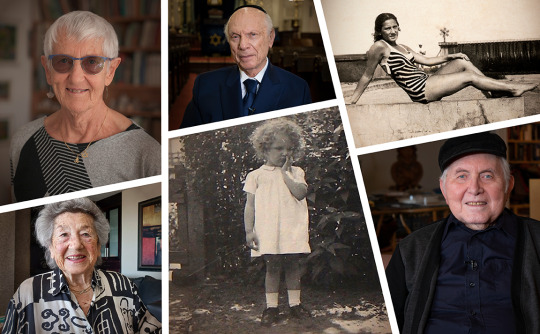
Holocaust Survivors - taken from https://www.un.org/en/holocaust-survivors-reflect
By dissecting this quote, interpreters can learn from Beck et al. (2018) and promote a more profound comprehension of the past, creating a story that endures while upholding moral and accurate historical interpretation.
References:
Beck, L., Cable, T. T., & Knudson, D. M. (2018). Interpreting cultural and natural heritage: For A Better World. SAGAMORE Publishing
Hooykaas, A (2024) Unit 4: Nature Interpretation Through Art and Planning for "All" Scenarios. ENVS*3000. University of Guelph
Oztig, L. I. (2023). Holocaust museums, Holocaust memorial culture, and individuals: a Constructivist perspective. Journal of Modern Jewish Studies, 22(1), 62–83. https://doi.org/10.1080/14725886.2021.2011607
4 notes
·
View notes
Text
Unveiling the Best Private MBA Colleges in India: Your Gateway to Excellence
In the dynamic landscape of higher education, private MBA colleges in India stand out as beacons of quality, innovation, and opportunity. As an esteemed edutech company committed to empowering aspiring professionals, we are thrilled to guide you through a journey of discovery towards the top private MBA colleges in the country.
India, renowned for its diverse educational ecosystem, boasts a plethora of private MBA colleges that excel in delivering world-class education, fostering leadership skills, and nurturing entrepreneurial spirit. Let's delve into the realm of these institutions, offering a blend of academic rigor and industry exposure.
1. Unparalleled Academic Excellence: Our curated list encompasses private MBA colleges known for their commitment to academic excellence. These institutions boast faculty members who are stalwarts in their fields, curricula designed to meet industry demands, and state-of-the-art infrastructure conducive to holistic learning experiences.
2. Industry Integration: One cannot undermine the significance of industry integration in MBA education. The top private MBA colleges in India forge strategic partnerships with leading corporations, facilitating internships, live projects, and placement opportunities for students. Through hands-on experience and interaction with industry experts, students are equipped with practical insights and skills essential for success in the corporate realm.
3. Innovation and Entrepreneurship: In today's fast-paced world, innovation and entrepreneurship are paramount. Our recommended private MBA colleges foster a culture of innovation, encouraging students to think disruptively, ideate, and transform ideas into impactful ventures. From incubation centers to entrepreneurship cells, these institutions provide a fertile ground for aspiring entrepreneurs to thrive.
4. Global Exposure: To thrive in a globalized world, exposure to international perspectives is indispensable. The top private MBA colleges in India offer various avenues for global exposure, including international exchange programs, collaborations with renowned universities, and participation in global conferences and competitions. Such experiences not only broaden students' horizons but also equip them with cross-cultural competencies essential for leadership roles in multinational corporations.
5. Alumni Network: A robust alumni network is the lifeline of any educational institution. Our selected private MBA colleges boast an extensive network of alumni who occupy leadership positions across industries worldwide. This network not only facilitates mentorship and networking opportunities but also enhances the credibility and employability of graduates.
1 note
·
View note
Text
Episode 30-Mustafa Cho’qoy the “Imperialist” Bogeyman from Turkestan
Mustafa Cho’qoy was the Minister of External Affairs for the Kokand Autonomy and when he wasn’t touring Turkestan trying to raise funds for a struggling government, he was reaching out to other countries to spread awareness of the deteriorating situation in Turkestan. Which makes sense when one considers that Russia was shattered by the rise of the Bolsheviks and engaged in a massive and devastating civil war. Who else were the people of Turkestan supposed to turn to if not other world powers when Russia was killing itself? However, for the Bolsheviks, serving in a government that wasn’t Communist sanctioned and reaching out to imperialists in the middle of an existential crisis was the ultimate betrayal and so they made Mustafa enemy number one amongst the Turkestan refugees.
But who was this guy and why did the Bolsheviks do so much to discredit him? Mustafa was a Kazakh born in Perovsky, in modern-day Kazakhstan, on December 25th, 1890. He was born into an aristocratic family with connections to powerful Warlords of the Steppe Hordes and maybe the Khiva Khanate. Thus, he was able to study at a Tashkent gymnasium before earning a law degree at the University of St. Petersburg. True to other Kazakh activists such as Alikhan Bokeikhanov (who heavily influence Mustafa’s political development) and Akhmet Baitursynov, Mustafa’s first foray into reshaping his society was to work within the Muslim Faction of the State Duma. This is different from Jadid activists who focused on the cultural and educational dimensions of activism and social rewiring. Mustafa served as a secretary to the Muslim Faction and wrote several speeches for deputies while also running his own liberal Kazakh newspaper the Birlik Tui (Banner of Unity).
Interestingly, while Mustafa was in Tashkent, he met the Russian Opera singer Maria Gorina. Maria was married to a lawyer at the time, but would divorce him and leave her old life behind to marry Mustafa on April 16th, 1918. They remained devoted to each other for the rest of their lives and Maria worked hard to preserve Mustafa’s writings and memory after he died in 1941.
Kokand Autonomy
When the Russian Revolution occurred, Mustafa was in Tashkent and involved with the growing Turkestan Autonomy movement. He would sit in the Shuro and take part in the multi-Muslim conferences as the people of Turkestan struggled to establish a government strong enough to weather the storm that was the Russian Civil War.
Interestingly, despite being involved with the Alash Orda movement, Mustafa chose to serve as Minister of External Affairs for the Kokand Autonomy (if we remember correctly, many members of Alash Orda actually returned to the Steppe to create the Alash Autonomy because they felt Kazakh interests weren’t be heard or represented in Tashkent). As Minister, Mustafa took part in efforts to raise funds, such as his January 14th trip to fundraise in Andijan, and also to raise troops for Kokand’s non-existent army. But, like many other Kokand Ministers, Cho’qoy often met disappointment and frustration in carrying out his governmental duties.
When Kokand’s neighbors, the Tashkent Soviet sent an army to overthrow the Kokand Government, Cho’qoy fled. He escaped Tashkent into the Ferghana where he stayed for a few months. Following the fall of the Kokand autonomy, he would write:
“the core of the autonomists remaining after the defeat at Kokand called upon its supporters to work with existing authorities in order to weaken the hostility directed at the indigenous population by the frontier Soviet regime." - Adeeb Khalid, Making Uzbekistan, pg. 72
Which may explain why he initially fled to Moscow to negotiate with the Bolsheviks where he was arrested by the White General Kolchak as “enemy of the Russian state”. He escaped and went to Ashgabat where the Russian Mensheviks just overthrew Soviet power and was setting up its own autonomous government.
While in Ashgabat, he met Vadim Chaikin, a Socialist Revolutionary lawyer, and together they sent a telegram to the Paris Peace Conference. The telegram, titled “Committee for the Convocation of the Constituent Assembly of Turkestan asking for the congress to recognize Turkestan’s unity and its right to a “Free and autonomous existence in fraternal friendship with the people of Russia.” (Adeeb Khalid, Making Uzbekistan, pg. 82).
The telegram went nowhere, but condemned Cho’qoy, in the eyes of the Bolsheviks, as a class traitor willing to sell out his own people to capitalists and imperialists. Choqoy stayed in Ashgabat for two years before fleeing the oncoming Red Army. He eventually resettled in Turkey for a few years before traveling to Paris, with help from former President of the Russian Provisional Government, Aleksandr Kerensky.
The Archdemon of Paris
While in Paris, Cho’qoy would become active in the Russian emigre circles as a writer of newspapers edited by Kerensky and Miliukov. At first, he found a home amongst the Russian immigrant community, but, given his experience during the civil war and being cut off from his homeland, he grew increasingly anti-Bolshevik and nationalistic in view and so he found refuge in the Turko-Tatar immigrant community within Europe and Turkey. He associated with other Bolshevik bogeymen such as Ahmed Zeki Veldi Togan and Usmon Xojao’g’li. While in exile, he published several papers such as Yosh Turkistan (Young Turkestan), his own memoirs, and lectured widely. He settled in Nogent-sur-Marne, a village outside of Paris, but traveled throughout Europe, setting himself as the spokesman for Turkestan. Tensions within the Turkestan immigrant community grew and eventually Mustafa split from Togan, who seemed to have been going down a more pan-Turkic path as opposed to Mustafa’s more nationalist, Turkestan forced approach.
Because of whom Cho’qoy was associating with, his writing, and his outspokenness, he became foreign enemy number one in the mind of the Bolsheviks. Any known or suspected association with him often meant a death sentence for those he left behind in Turkestan. Despite his supposed influence, Cho’qoy struggled in exile, trying to get his work published and trying to get the world to notice what was occurring in Turkestan. While Cho’qoy was able to find other immigrants within Paris and around the world, he was cut off from Turkestan itself. So Cho’qoy wasn’t connected to what was happening on the ground nor could he shape what was occurring within Turkestan. He ended up being an immigrant that could only speak on situations as they were before he fled, unable to connect with the people most affected by the Soviet Union, fighting with other immigrant writers and spokesmen, and taking to a European audience that had long forgotten Turkestan.
Cho’qoy, like the Kokand Autonomy, was a danger to the Bolsheviks because of what he could have been. He offered an other option to disgruntled Turkestani immigrants and citizens of Turkestan, he provided uncensored and uncontrollable critique of a Soviet system the Bolsheviks were struggling to implement within Central Asia, and was connected with many other bogeymen that haunted Bolshevik dreams. While it is questionable what Cho’qoy could have achieved for Turkestan from Paris, the fact that he was out there at all was enough for the Bolsheviks.
In a Nazi Prison
World War II led to the fall of France to the Nazis and in 1941, they arrested Cho’qoy. He was placed in a camp in Compiegne with other Russian emigres. He was summoned to Berlin to work with other Central Asian POWs brought from the front and created a German Turkestan Legion. This would be the first time Cho’qoy spoke to someone from Central Asia since he fled Turkestan. He was astonished by their conditions, but also traumatized by Nazi brutality. He wrote:
“It is not possible to relate all the various cases of senseless executions in Debica. Every time I left the camp, I saw several corpses with smashed skulls…One wonders how much of this is because of the “Asiatic” contagion about which the loudspeakers scream everyday all over Germany.” - Adeeb Khalid, Making Uzbekistan, pg. 275
He had no sympathy with the Nazis but understood that a Nazi victory could mean the fall of the Soviet Union. He wrote:
“Yes, we have no path, other than the anti-Soviet path, other than the wish for victory over Soviet Russia and over Russian Bolshevism. This path, regardless of our will, is laid through Germany. And it is strewn with the corpses of those executed in Debica.” - Adeeb Khalid, Making Uzbekistan, pg. 275
This was a “small and pitiful speculative trade in human misfortune” necessary for national liberation. (Adeeb Khalid, Making Uzbekistan, pg. 275, Khalid) He discussed the idea of a Turkestan Legion and the future of Muslim states with Nazi General Alfred Rosenberg, laying down conditions that would save the lives of Muslim Russian POWs. After realizing the Nazis were negotiating in bad faith, he declared to lead the Turkestan Legion. Mustafa died on December 27th, 1941, supposedly from typhus he contracted while in the Compiegne Camp.
References
Making Uzbekistan: Nation, Empire, and Revolution in the Early USSR by Adeeb Khalid
Central Asia: a New History from the Imperial Conquests to the Present by Adeeb Khalid
The Politics of Muslim Cultural Reform by Adeeb Khalid
#central asian history#central asian civil wars#central asia#mustafa cho'qoy#history blog#queer historian#Spotify
5 notes
·
View notes
Text
Getting Into Anime & Manga Studies

By: Peggy Sue Wood | @pswediting
School is starting back up again, and I thought it would be fun to share with you all a short post about getting started in anime and manga studies. If you are not sure what you want to do in your academic field of study but have an interest in anime and manga, then you may want to consider integrating it into some of your work. You can talk with your professors about how to make this possible and–hopefully–find a bit of inspiration in this post for getting started.
What are Anime & Manga Studies?
Anime and manga studies refer to the academic field that focuses on the critical analysis of Japanese animation (anime) and comics (manga) as well as related topics such as the Japanese culture, history, and society.It is considered an an emerging field of interest to scholars in many different subjects and disciplines around the world.
Anime and manga studies as an academic field is a growing community that often provides commentary on new trends in publications and cultural interests that relates to the sequential art media form. In these studies, scholars examine various aspects of anime and manga, including their aesthetics, narrative structure, cultural significance, and social impact. They may also analyze how anime and manga reflect Japanese society, its values, and its global influence.
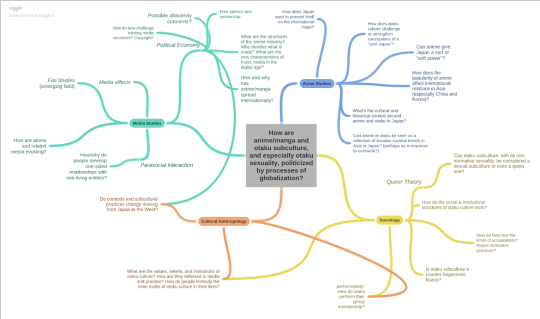
Graphic by Paul Ocone | Source: https://sites.google.com/umbc.edu/animemangastudies/degree-plan/concept-map
If you look at the graphic above, this ties four overlapping fields together for a singular study on otaku subculture within the anime and manga studies realm. This is not uncommon for any field of academia really, as many fields find academic overlap in other areas.
Some of the most typical places you can find anime/manga academics are:
Asian Studies
Media Studies
Fan Studies
Cultural Studies
Literature Studies
Why study manga and anime?
Why people examine this particular media in an academic field varies from person to person. For example, I have a personal passion an interest in the media and in storytelling; one of my colleagues has an interest in the developing anthropology of popular culture; one friend of mine enjoys examining marketing techniques–reasons to enter are really endless, but if you have an interest in cultural notes or the humanities, media and particularly entertainment media like anime and manga are great places to find a starting point.
Rewards (and consequences) are as limited as other academic areas, as with most academic fields. You may gain recognition, or your financial backing if you become a professor or have influencer status with brand deals… but the rewards are more likely to include free attendance to conventions, some publishing opportunities, and better access to fans and public interest/support for your work.
Getting Started (Even Without A Degree)
To enter the academic field of anime and manga studies, you typically need to pursue higher education in relevant fields such as literature, film studies, cultural studies, or media studies. Some universities offer programs and courses in anime and manga studies, but many scholars in the field come from other disciplines by apply their knowledge to the study of anime and manga.
However, you do not necessarily need a degree to get started.
There are conferences and conventions you can attend or present at. Most anime conventions have the option of fan-panel submissions. You can pitch your panel ideas there! Typically, panels run through 30, 60, or 90-minute slots. So, prepare well!
There are also academic journals like Mechademia or The Journal of Anime and Manga Studies that you can submit academic paper to. There are also fan-related places to submit to (blogs, digital magazines, and such), like Anime Feminist and us at The Anime View.
Relating to this, you can also get started by simply building a presence either online or in-person, or both. Building a preseance is one of the easier steps and involves engaging with the community. If you are already submitting to journals and cons, then you’ve begun! Other ways include going to local meet-ups/events, building a social media presence, like blogging.
Again, there may be sometimes when you need a degree. Like, for example, certain publishing or presenting opportunities. This is certainly not the case with all places, but some journals and conferences–especially if they are within a particular field like English or Education, require those that submit work to either have a degree or be working on one. (Some even require a graduate-level degree.) Keep in mind where you plan to submit and what they require when deciding to share your work. Also, keep in mind that without a degree your work may not be prioritized
Teaching in a classroom is also preventative without a degree. Though you can inform a class on a subject via a school project or as a guest speaker, but to teach such materials in a classroom setting requires formal education.
Academia certainly has some ivy-tower parts to it, and this too, exists in anime and manga studies. However, remember that as you get further along in academia, you may need a degree to do some things, but you definitely do not need one to get started!
You should never feel discouraged from entering academia. If one group is not a good fit for you, remember that the anime and manga fans community is huge and that there are lots of academic places to get started. Academic spaces for consideration include, but are not limited to:
Schools (High School, College/University, Graduate School)
Libraries
Clubs
Online Forums
Conventions/Conferences
Also, for consideration is the many different ways you can approach the medium for study in a less formal way. Such as: analyzing the messages and themes, considering the creator’s intent, and how the media may be engaging an audience outside of its intended focus.
I’ll end here by writing that I hope this brief introduction to getting started in the field of anime and manga studies was informative and thank you all for your interest.
—
This post is very close to the script I have prepared for a short presentation on the subject. If you are interested, you can view the presentation slides here.
#academia#academic#academics#anime#anime and manga studies#manga#comics in education#comics in the classroom#review
3 notes
·
View notes
Text
NSAMFGC Bangalore: Nurturing Excellence in Education and Beyond
NSAMFGC Bangalore (NSAM First Grade College) stands as a beacon of academic excellence and holistic development in the vibrant city of Bangalore, India. Established with a vision to provide quality education and foster ethical values, NSAMFGC has been a trusted name in the education sphere for several decades.
A Legacy of Excellence: NSAMFGC has a rich legacy of nurturing young minds since its inception. Founded by Late Sri N. S. Narasimha Swamy, a visionary philanthropist and educationist, the college upholds his principles and values, ensuring that education is accessible to all and empowers students to succeed in their chosen paths.
Academic Programs: The college offers a diverse range of undergraduate and postgraduate courses in arts, commerce, and science streams. These programs are designed to meet the dynamic demands of today's industries while focusing on the overall development of students. NSAMFGC's curriculum is aligned with industry trends and incorporates the latest advancements in respective fields.
Experienced Faculty: NSAMFGC boasts a dedicated and experienced faculty comprising subject matter experts and accomplished educators. The faculty members not only impart knowledge but also serve as mentors, guiding students on their academic journeys and helping them discover their true potential.
State-of-the-Art Infrastructure: The college's campus is equipped with modern infrastructure and facilities, creating an environment conducive to learning and personal growth. Well-equipped classrooms, laboratories, a digital library, sports facilities, and hostel accommodations ensure that students have access to all the resources they need to excel in their academic pursuits.
Holistic Development: NSAMFGC believes in nurturing all-round development among students. Alongside academic excellence, the college encourages students to participate in co-curricular and extracurricular activities, such as sports, cultural events, and community service. These activities instill essential life skills like leadership, teamwork, and social responsibility.
Placement and Career Support: NSAMFGC's placement cell actively assists students in securing job placements and internships. The college has a track record of producing graduates who are highly sought-after by leading employers in various industries. The placement cell also provides career guidance, soft skill training, and industry interactions to enhance students' employability.
Research and Innovation: NSAMFGC encourages research and innovation among faculty and students. The college supports research projects and provides a platform for students to showcase their research findings through conferences and publications. This culture of innovation fosters a spirit of curiosity and critical thinking.
Community Engagement: As a responsible educational institution, NSAMFGC actively engages with the local community through various initiatives. These efforts focus on social welfare, environmental awareness, and contributing to the betterment of society.
Alumni Network: NSAMFGC takes pride in its strong and supportive alumni network. The college maintains a close relationship with its alumni, who continue to contribute to the college's growth and success. The network serves as a valuable resource for current students, offering mentorship and career guidance.
Conclusion: NSAMFGC Bangalore stands as a prominent educational institution, dedicated to empowering students with quality education and fostering their holistic development. With a legacy of excellence, experienced faculty, industry-relevant programs, and a commitment to societal welfare, NSAMFGC continues to inspire and prepare the next generation of leaders and professionals to make a positive impact in the world.

2 notes
·
View notes
Text
7 Best EDM and Rave Festivals in Australia ~ Ardamus.com
UNRULY SHOTTAS: PORT SYDNEY
Based on the True Story of a Culture Capital. They were the Murder Capital of Latin America, Made a Aussie Accent, Set World Records for Athletics, Printed over £50 Billion in Barbados, and immigrated a Nigerian Rugby Prospect. They made the Kingston-Calabar OT Trafficking Intermodal through Investments for a Trade Agreement and a Highway. Port Sydney Changed from a Fishing Villages to a Port Town.
Port Sydney (Ocho Rios) is a port town on the north coast of Jamaica. A former fishing village, it’s now a resort with a cruise ship harbor and a busy bay beach that’s lined with hotels. The surrounding parish of Saint Ann is home to rainforest, rivers and waterfalls. Dunn’s River Falls is a terraced, 180m mountain waterfall with lagoon pools, surrounded by trees.
Gold Smuggling through a Government Yard and Western Projects Point of View called Slumdog Millionaire: My Richness Is Life.
Philosophy
True Identity
Logotherapy
Having a Lion's Heart
Reproduction
Astrology
London Trap Culture
Ethnic Separatism (YARDIE)
African Diaspora
Sub-plots
Decadence
Ogun
Pre-colonial Africa
Trans-atlantic Slave Trade
Warlord-ism
African Drums and Shamanic Drumming
West African Pound
Tech-Driven Solutions Agronomics
Conflict Prevention and Reconstruction Unit
SUN LORD STRUCTURE
A cathedral is a church that contains the cathedra of a bishop, thus serving as the central church of a diocese, conference, or episcopate.
Parish Artisanal Plantation
Art Collegiate
Recession Resistance Industry
Marines Exclusive Church for Retirement Home
Rugby Church League on Thursday and Sunday after 5:30 and Noon Virgil; Equipment Sponsor and Free Clinics; Ram Sacrifices for Mars Venerated Athletes
My version of the Heavenly Host. Proxy Murder Government Officials, Judges, and Police Stations with Arcarbine Lords for Urban Warfare.
Westminster System with Executive Branch for Choirs and Council and House of Lords ARCABINE LORDS
Another phrase to describe this obedience to the voice is “reckless abandon.” It simply means that we let God do what God wants to do through us. It means if He tells us to do something or say something—we do it.
Pedagogy (/ˈpɛdəɡɒdʒi, -ɡoʊdʒi, -ɡɒɡi/), most commonly understood as the approach to teaching, is the theory and practice of learning, and how this process influences, and is influenced by, the social, political, and psychological development of learners. Pedagogy, taken as an academic discipline, is the study of how knowledge and skills are imparted in an educational context, and it considers the interactions that take place during learning. Both the theory and practice of pedagogy vary greatly as they reflect different social, political, and cultural contexts.
Augustine's thesis depicts the history of the world as universal warfare between God and the Devil. This metaphysical war is not limited by time but only by geography on Earth. In this war, God moves (by divine intervention, Providence) those governments, political/ideological movements and military forces aligned (or aligned the most) with the Catholic Church (the City of God) in order to oppose by all means—including military—those governments, political/ideological movements and military forces aligned (or aligned the most) with the Devil (the City of the World).
Mekubbalim (followers of Kabbala) claim that the symbol has magical powers. There is no explicit historical or archaeological support for any of those claims. The star consists of two intertwined triangles: one pointing up to God and the other pointing down to man, symbolizing the relationship between the two—"the interpenetration of two realms" (source: Franz Rosenzweig, Star of Redemption, 1912). The animals associated with the Christian tetramorph originate in the Babylonian symbols of the four fixed signs of the zodiac: the ox representing Taurus; the lion representing Leo; the eagle representing Scorpio; the man or angel representing Aquarius. SHIELD OF OBASI!
God of Bethlehem: Regulus; Uranus-Saturn; Pluto Sol, and Venus (Sun Sky God; Elements Sun, Thunder, Air; Cardinal) Crista: Armour of God, Shield of Trinity, Shield of Obasi, Mars Blood, Rose of Venus, Pluto Effect, and Virility Crown; Religion: Tewahedo, Physique: Anabolic Metabolism Insulin Sensitivity, MSTN GENE, Roux en Y FBN1
RUGBY
World Cup Ambassador: In the Commonwealth of Nations, a high commissioner is the senior diplomat, generally ranking as an ambassador, in charge of the diplomatic mission of one Commonwealth government to another. Instead of an embassy, the diplomatic mission is generally called a high commission.
Work Out: Hurdle Plyometrics Open Closed Chain Resistance Training with Power Sleds, Wall Sit Jump Contrast Training, and Lane Swimming with Treading Breaks.
Offence: Back row (Loose forwards) Brigade: Lineouts, Crash Balls Mauls (Forearm Shoulder Barge), Quick Rucks, Pick and Go, Clear outs, and Offload Playmaker. First Receiver after Rucks or Pick and Go Rucker. Three Door Explode: Three Doors as Decision Making Indicator for Down Hill Sprinting; if No Doors Pass the Ball.
Defence: The basic defensive unit in rugby consists of three players. This obviously shifts very quickly, but at the point a tackle is likely, there should be a defender square with the ball carrier and supporting players on either side square with the immediate threats on the ball carrier's left and right. The drift defence is one of the two main types of defensive strategies in rugby (the other being the blitz defence). The basic concept behind the drift defence is to go “up and out” as a defensive line; once the ball carrier has past, the defender marking them should push outward to cover the receiver whilst the rest of the defensive line also shifts outward. Umbrella Defence provides more intensity in front of the ball than flat defence, with flanking support a step behind to cover kicks and recover quickly after a tackle is made. It also makes it easier to stop linebreaks if the player in front of the ball carrier is stepped.
DRUG SORCERY AND PHARMACOECONOMICS (PHARM BOYS AND PHARMA FIRMS)
Pharmaterrorism, in its original context, is understood to refer to the attempts of narcotics traffickers to influence the policies of a government or a society through violence and intimidation, and to hinder the enforcement of anti-drug laws by the systematic threat or use of such violence.
Pharma Maritime economy is a political and economic term applied to countries where all legitimate institutions become penetrated by the power and wealth of the illegal drug trade.
Elements of the maritime industry such as seaports and terminals have always been important areas of social and economic opportunities. Ports are key strategic sectors, playing key economic, internal and international security roles for both developed and developing countries.[9] The strategic importance of ports and other maritime resources have led to the industry being criticized by Maersk, a major shipping company, as "an environment where facilitation payments and extortion are common occurrences".[10] In the EU specifically, coastal regions and major sea ports have shown to present the highest risks of corruption. Europe's coastal borders have increasingly been subject to corruption pressure by smugglers in the past few years. In addition, border guards and local government officials are often involved in corruption schemes related to cross-border trade.Typically, in European small coastal towns, the corruption of border guards is often related to corruption in local authorities.[11] Several ports in Europe have been identified by the Center for the Study of Democracy as having extreme vulnerability to corruption pressures:[11]
Corruption can be defined in various ways. For example, according to the Oxford Dictionary, corruption is “dishonest or illegal behavior, especially of people in authority”.[4] Huntington (1989) defined it somewhat differently, by describing corruption as “the behavior, exhibited by public officials which deviates from accepted norms in order to serve private aims”.[5] These definitions are also correct for maritime corruption specifically, however, in this field corruption can be categorized in different ways – especially at ports.
Sequeira and Djankov (2014) distinguish between two types of corruption at ports: collusive and coercive corruption. Under collusive corruption, public officials and private agents share illicit transaction-generated rents, while under coercive corruption, public bureaucrats force private agents to pay additional fees to be able to gain access to public services and goods.[6]
Pharmacoeconomics refers to the scientific discipline that compares the value of one pharmaceutical drug or drug therapy to another.[1][2] It is a sub-discipline of health economics. A pharmacoeconomic study evaluates the cost (expressed in monetary terms) and effects (expressed in terms of monetary value, efficacy or enhanced quality of life) of a pharmaceutical product. Pharmacoeconomic studies serve to guide optimal healthcare resource allocation, in a standardized and scientifically grounded manner.
Pharmacoeconomics centers on the economic evaluation of pharmaceuticals, and can use cost-minimization analysis, cost-benefit analysis, cost-effectiveness analysis or cost-utility analysis. Quality-adjusted life years have become the dominant outcome of interest in pharmacoeconomic evaluations, and many studies employ a cost-per-QALY analysis. Economic evaluations are carried out alongside randomized controlled trials and using methods of decision-analytic modeling. Pharmacoeconomics is a useful method of economic evaluation of various treatment options. As more expensive drugs are being developed and licensed it has become imperative especially in context of developing countries where resources are scarce to apply the principles of pharmacoeconomics for various drugs and treatment options so that maximum improvement in quality of life can be achieved in minimum cost.[3]
A tablet press is a mechanical device that compresses powder into tablets of uniform size and weight. A tablet press can be used to manufacture tablets of a wide variety of materials, including pharmaceuticals, nutraceuticals, cleaning products, industrial pellets and cosmetics.
A cough syrup filling machine is designed to fill liquid in any viscosity, including syrup. There are many types of syrup-filling machines, such as vacuum, servo, pump, gravity, pressure, piston, and counting filling machines.
AUSSIE BOUND
3 notes
·
View notes
Text
Discover the Best Dental College and Hospital in Hyderabad: Sri Sai College of Dental Surgery & Hospital
When it comes to comprehensive dental education and clinical expertise, Sri Sai College of Dental Surgery & Hospital (SSCDS) stands out as the best dental college in Hyderabad and the best dental hospital in Hyderabad, positioned in the tranquil surroundings of Vikarabad, just 60 km from the city.

🦷 Education: Building Future Dental Leaders
Founded in 2001 as the first private dental college in Telangana, SSCDS has consistently set benchmarks. Offering a full BDS program with 100 seats annually and a pioneering MDS program (since 2005), it covers all nine major dental specialities: Orthodontics, Oral & Maxillofacial Surgery, Conservative Dentistry & Endodontics, Prosthodontics, Periodontics, Paediatric Dentistry, Oral Medicine, Oral Pathology, and Public Health Dentistry
The institution boasts state-of-the-art infrastructure—a 100‑bed general hospital, 350+ dental chairs, four operating theatres, and cutting-edge labs with CBCT scanners, lasers, microscope-assisted endodontics, CAD-CAM, TMD clinics equipped with jaw trackers and EMG, and an in-house prosthetic lab. It’s also recognized by the Dental Council of India, ensuring credible and quality dental education.
💡 Research, Fellowships & Community
A hallmark of SSCDS is its commitment to research and professional development. The college has organized national conferences, served as a nodal centre for the DCI Oral Health Survey, and partners with international leaders like Boston University’s Goldman School of Dental Medicine for clinical research
Through SSCDS-GUIDE, they offer fellowships and certificate programs in implantology, laser dentistry, esthetic dentistry, conscious sedation, and digital dentistry, combining academic excellence with clinical finesse
🏥 Patient Care: The Best Dental Hospital in Hyderabad
As a clinical hub, SSCDS Hospital is acclaimed as the best dental hospital in Hyderabad, handling over 40,000 new patients annually across 9 speciality departments. With 350+ dental chairs, four modular OTs, and an adjoining 100‑bed general hospital, it provides a wide spectrum of services—from routine check‑ups to advanced procedures like dental implants, orthognathic surgery, oral cancer reconstruction, TMD care, orthodontics (including clear aligners), cosmetic dentistry, pediatric treatments, and maxillofacial trauma care.
Specialty services include laser dentistry, CBCT diagnostics, microscopic endodontics, and a TMD clinic featuring high-end equipment like T‑Scan, JVA, jaw tracking, EMG, and TENS. The Oral & Maxillofacial Surgery department manages complex cases—jaw fractures, cysts, tumors, cleft repairs, dental implants, and TMJ surgeries—supported by expert surgeons and modern OT infrastructure
Care is both advanced and affordable; many procedures are available at nominal cost or free under community-service initiatives.
🌳 Campus Life & Infrastructure: Learning Beyond Classrooms
The SSCDS campus spans 30 scenic acres beside Vikarabad Lake. It features dedicated boys’ and girls’ hostels, guest faculty rooms, lecture theatres seating 500, a world-class library with international journals, and labs for preclinical and clinical training
The campus fosters holistic growth, hosting cultural fests, sports, workshops, and community programs with an eco-friendly environment and recreational facilities
🏆 Achievements and Recognition
SSCDS alumni and students have consistently excelled, garnering distinctions in BDS and MDS exams, national-level awards, paper presentations, and posters. With its first postgraduate cohort in 2006, the college rapidly expanded MDS specialities, achieving full DCI recognition and growing intake across all nine specialities.
🙌 Why SSCDS Is Truly the Best
Innovative Education: First private MDS programme in Telangana, full 9-speciality coverage, international research partnerships, high academic performance
Unmatched Clinical Setup: High patient inflow ensures practical learning and superior community care.
Cutting‑Edge Technology: From CBCT and lasers to CAD-CAM and TMD diagnostics
Affordable Excellence: Advanced and often free treatments demonstrate deep community commitment.
In every aspect—from its expansive academic programs and cutting-edge research to its unparalleled clinical services and community outreach—Sri Sai College of Dental Surgery & Hospital emerges as the best dental college in Hyderabad and the best dental hospital in Hyderabad. Whether you’re an aspiring dentist or a patient seeking exceptional care, SSCDS is the trusted destination for excellence in dental health and education.
📞 Contact Us
Address: 1-2-64/1 & 2, Kothrepally, opposite Shiv Sagar Lake, Vikarabad, Telangana 501102 Phone: +91 96264 73737 (hospital) • +91 82873 30330 (college) Email: [email protected] / [email protected] Website: https://www.sscds.edu.in/
0 notes